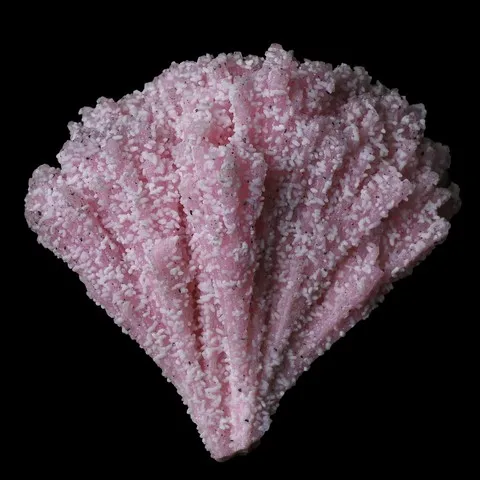KUTNAHORITE

Class : Carbonates, Nitrates, Borates
Subclass : Anhydrous Carbonates
Crystal System : Trigonal
Chemistry : CaMn(CO3)2
Rarity : Quite rare
Kutnahorite (or kutnohorite) is a rare carbonate which was first described in the Czech Republic at Kutna Hora by the mineralogist Bukovsky A. It is this type-locality that gave it its name. Colors vary from white to pink but it can also sometimes be yellow to brown. The crystals often occur in rounded granular masses, sometimes in fan, but rarely in single crystals. It is a hydrothermal mineral from low to medium temperature, it is often associated with other carbonates such as dolomite or ankerite with which it forms series. It is a mineral that is not used in any particular area, specimens are only for collection.
Main photo : Kutnahorite de Wessels Mine, Hotazel, Afrique du Sud
Kutnohorite in the World
Kutnohorite in France
Kutnohorite was reported at Saphoz in Haute-Saône, the largest Vosgian manganese deposit.
Twinning
Kutnohorite has no twinned crystals known.
Fakes and treatments
No scam known for this mineral.
Hardness : 3,5 à 4
Density : 3,12
Fracture : Sub-conchoidal
Streak : White
TP : Opaque to transparent
RI : 1,535 à 1,727
Birefringence : 0,192
Optical character : Uniaxial -
Pleochroism : None
Fluorescence : Sometimes red (SW-UV)
Solubility : Acids
Magnetism : None
Radioactivity : None
